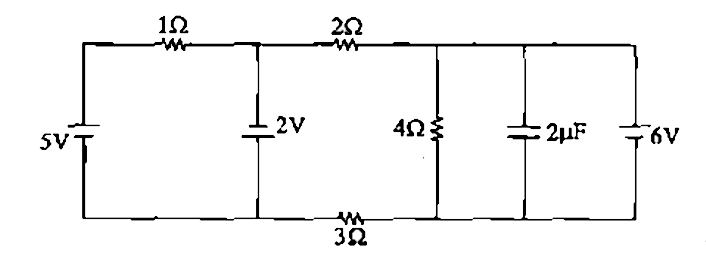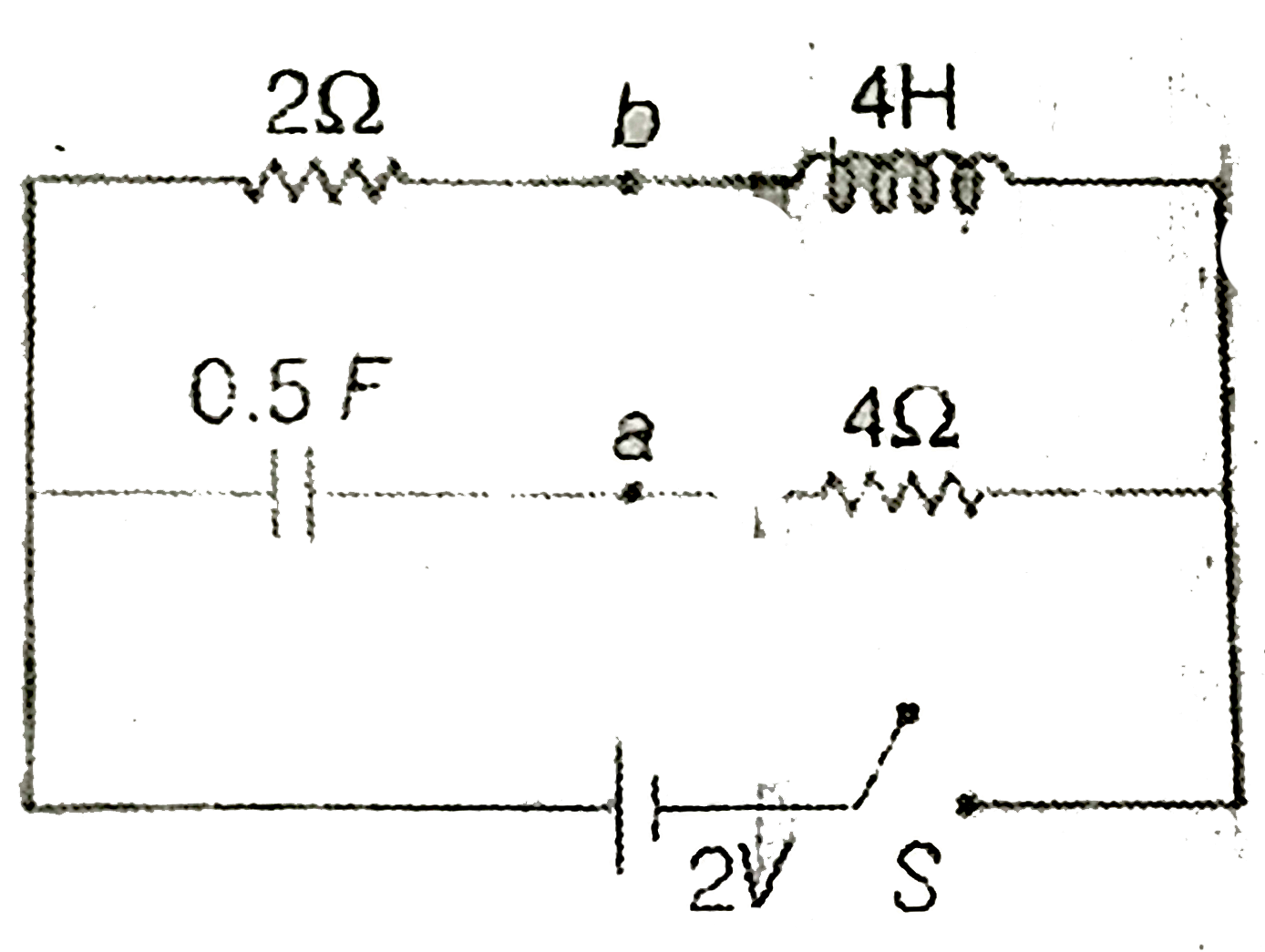In the circuit shown in the figure, the switch S is initially open and the capacitor is initially uncharged. I1,I2 and I3 represent the current in the resistance 2Ω,4Ω and 8Ω respectively.
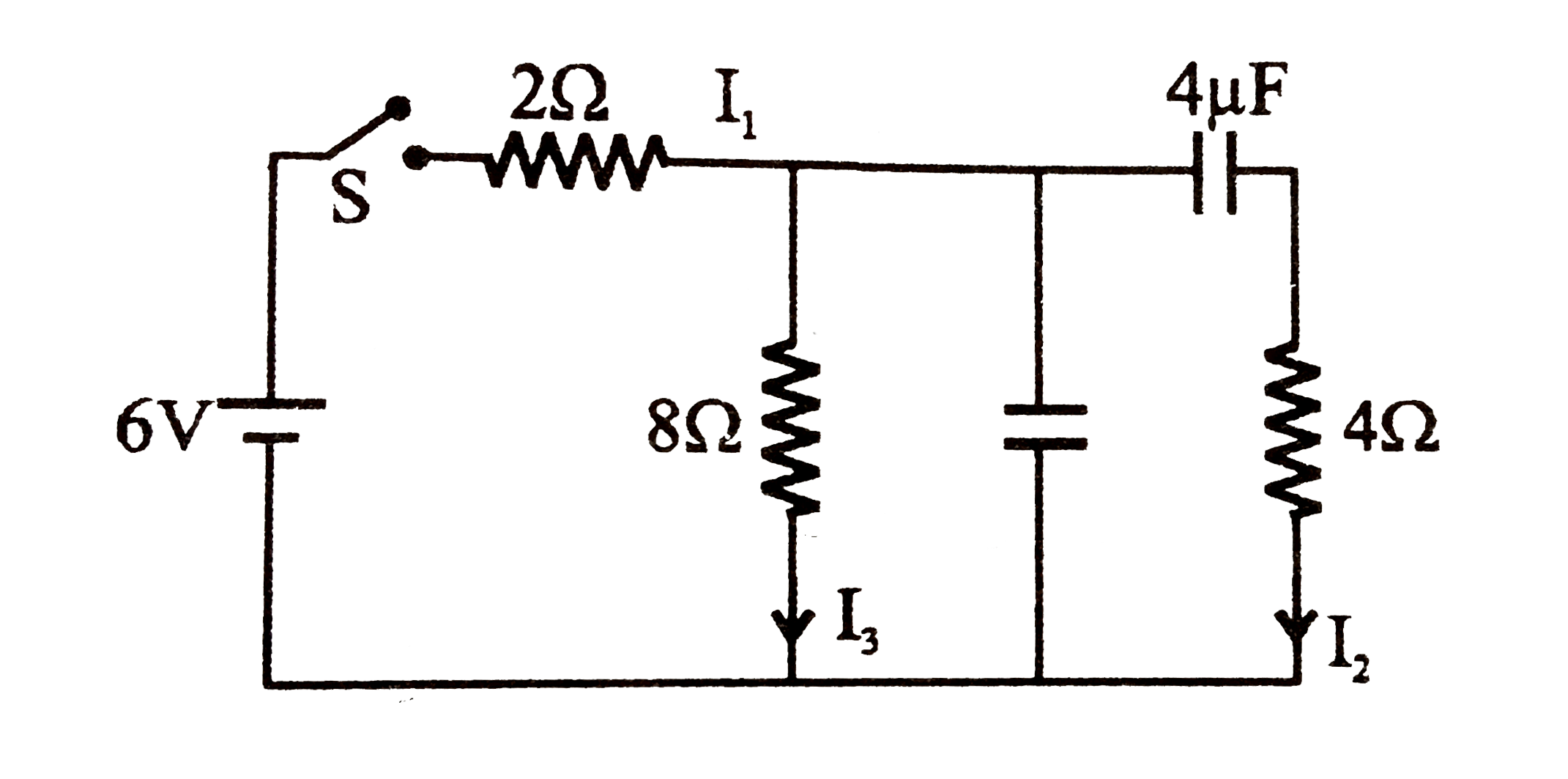
(a) Initially the capacitor is uncharged so its behaviour is like a conductor. Let potential at A is zero so at B and C also zero and at F it is ε. Let potential at E is x so at D also x. Apply Kirchhoff's Ist law at point E :
x−εR+x−0R+x−0R=0⇒3xR=εR
x=ε3,Qc=0
∴I1=−ε/3+εR=2ε3R⇒I2=dQDt=ε3R and I3=ε3R
Alternatively
i1=εReq=εnR+R2=2ε3R⇒i2=i3=i12=ε3R and dQdt=i2=ε3R
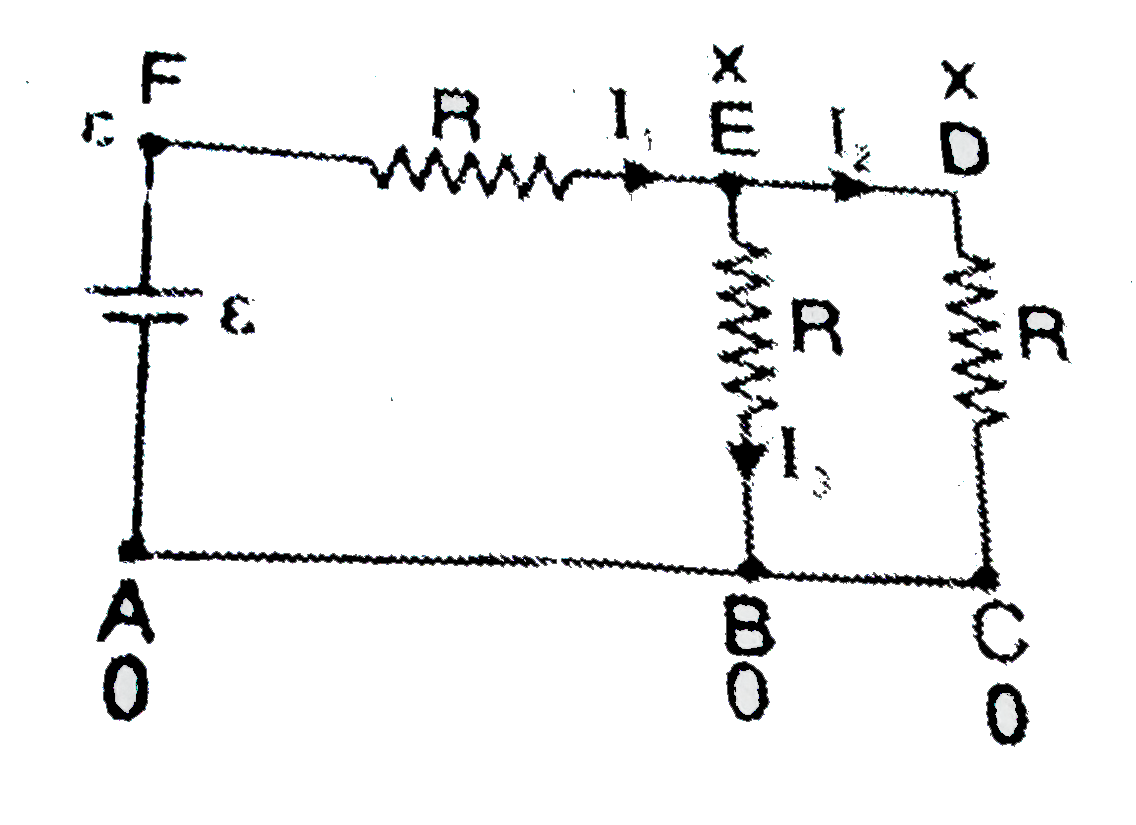
(b) at t=∞ (finally)
capacitor completely charged so their will be no current through it.
I2=0,I1=I3=ε2R
VE−VB=VD−Vc=(ε/2R)R=ε/2
⇒QC=εC2,dQdt=I2=0
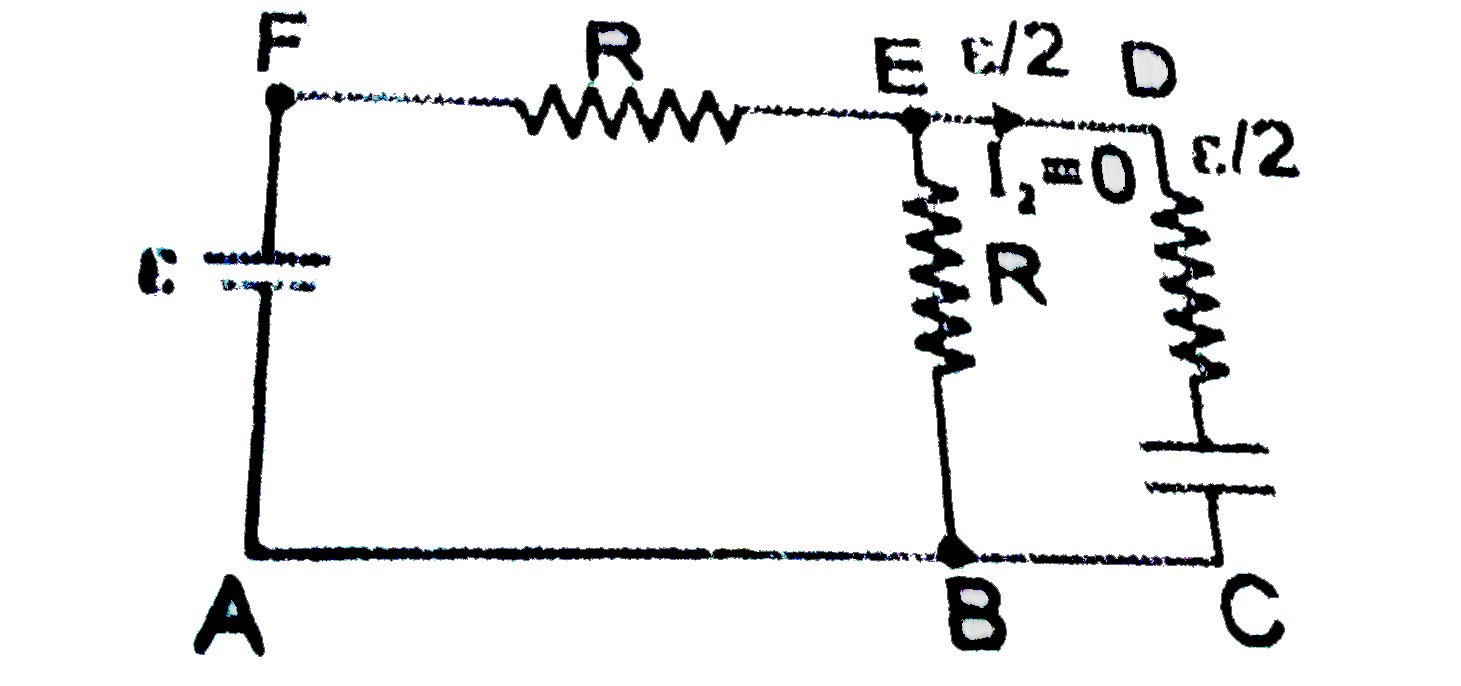

Topper's Solved these Questions
- CAPACITANCEBOOK - RESONANCECHAPTER - CAPACITANCEEXERCISE - Miscellaneous Solved Example
3 Videos
- CAPACITANCEBOOK - RESONANCECHAPTER - CAPACITANCEEXERCISE - Exercise - 1
79 Videos
- ATOMIC PHYSICSBOOK - RESONANCECHAPTER - ATOMIC PHYSICSEXERCISE - Advanved level problems
17 Videos
- COMMUNICATION SYSTEMSBOOK - RESONANCECHAPTER - COMMUNICATION SYSTEMSEXERCISE - Exercise 3
13 Videos
Similar Questions
Knowledge Check
In the circuit shown in the figure, the current flowing in 2Ω resistance
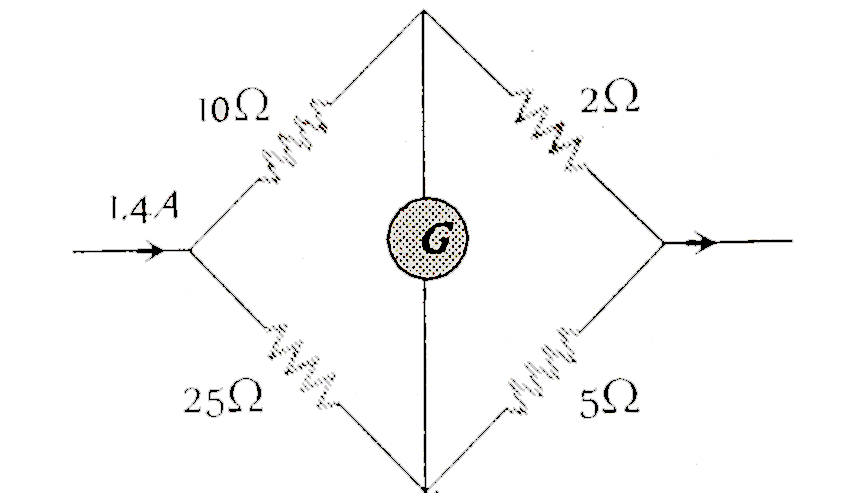 A1.4AB1.2AC0.4AD1.0A
A1.4AB1.2AC0.4AD1.0AIn the circuit shown, the current in 3Ω resistance is
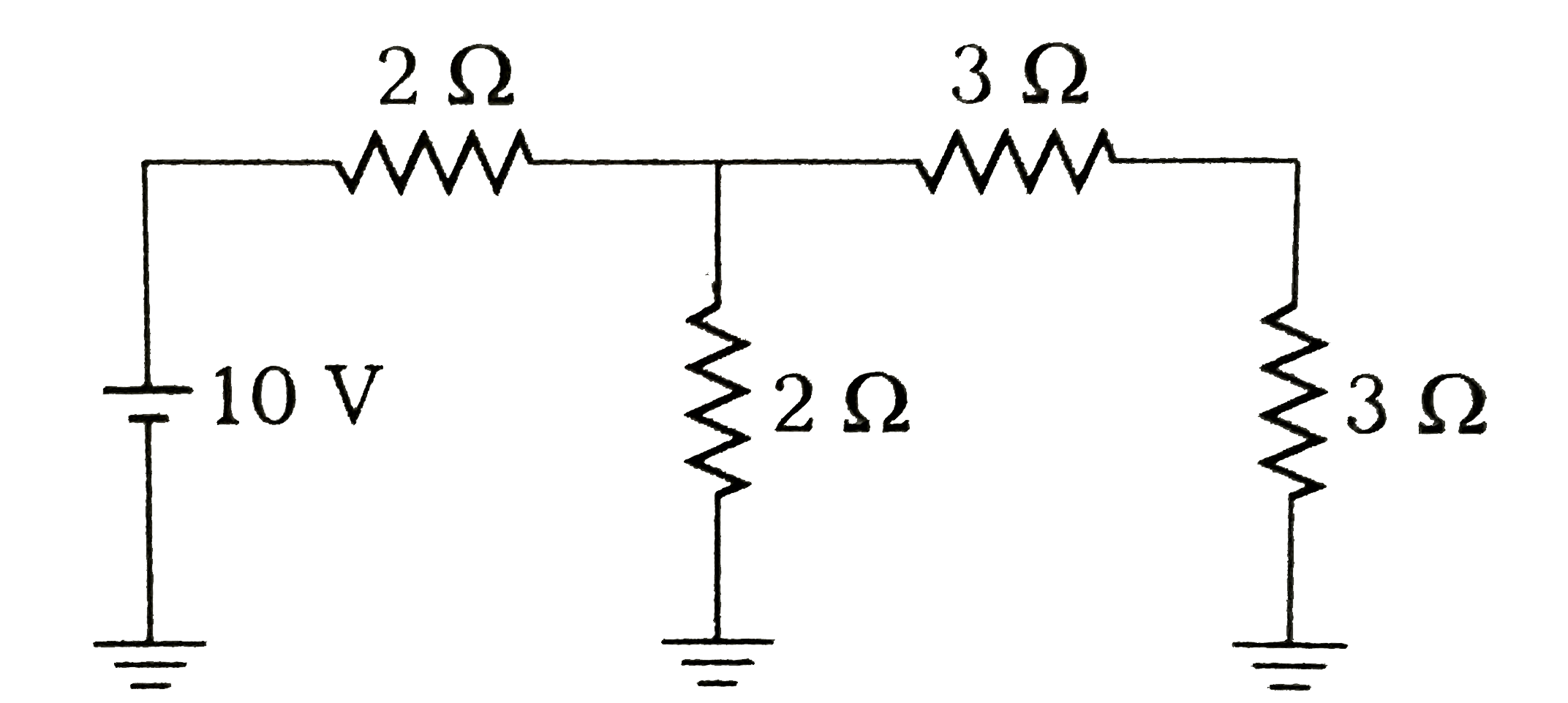 A1AB17AC57AD157A
A1AB17AC57AD157AFor the circuit shown in the figure, the current in the 4Ω resistor is
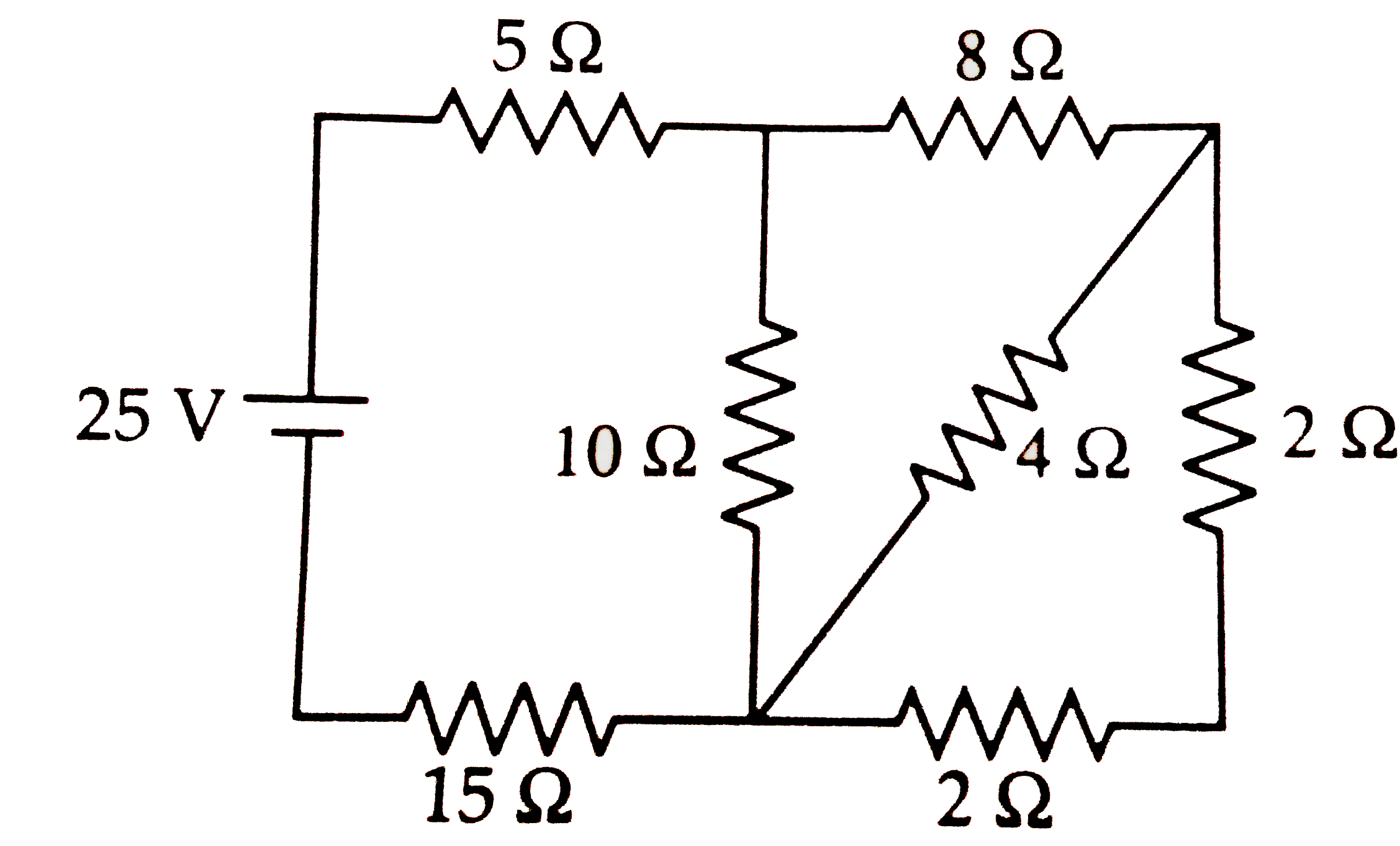 A0.5AB0.25AC1AD1.5A
A0.5AB0.25AC1AD1.5A
In the connection shown in the figure the switch K is open and the capacitor is uncharged. Then we close the switch and let the capacitor charge up to the maximum and open the switch again. Then
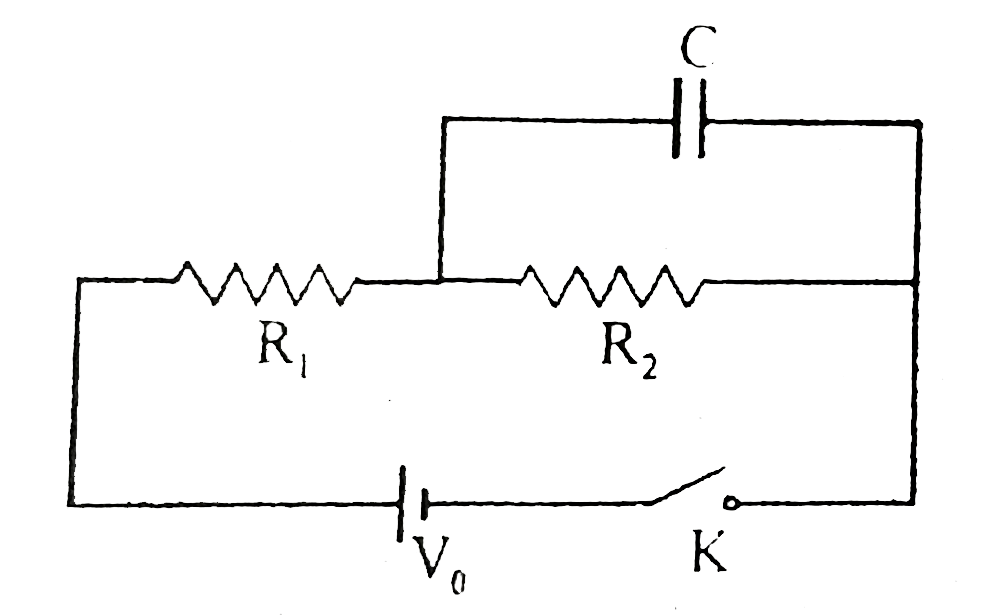
(a) the current through R1 be I1 immediately after closing the switch,
(b) the current through R2 be I3 immediately after reopening the switch, Find I1I2I3 (in ampere−1) (Use the following data: V0=30VR1=10KΩR2=5kΩ)
View SolutionIn the circuit shown in figure-3.171, find current in 4Ω resistance.
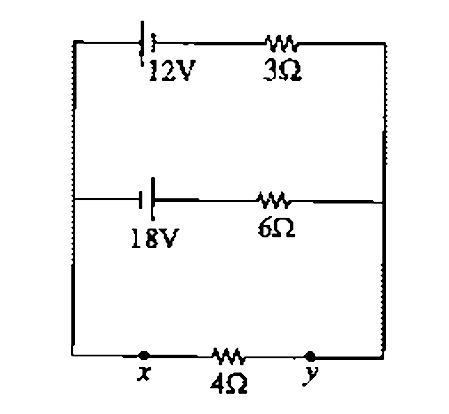
View SolutionIn the circuit shown, the switch 'S' is closed at t=0. Then capacitor is initially uncharged. Then the current through the resistor R=8Ω at t=0.4×10−3sec is (Take e−2=0.135 )
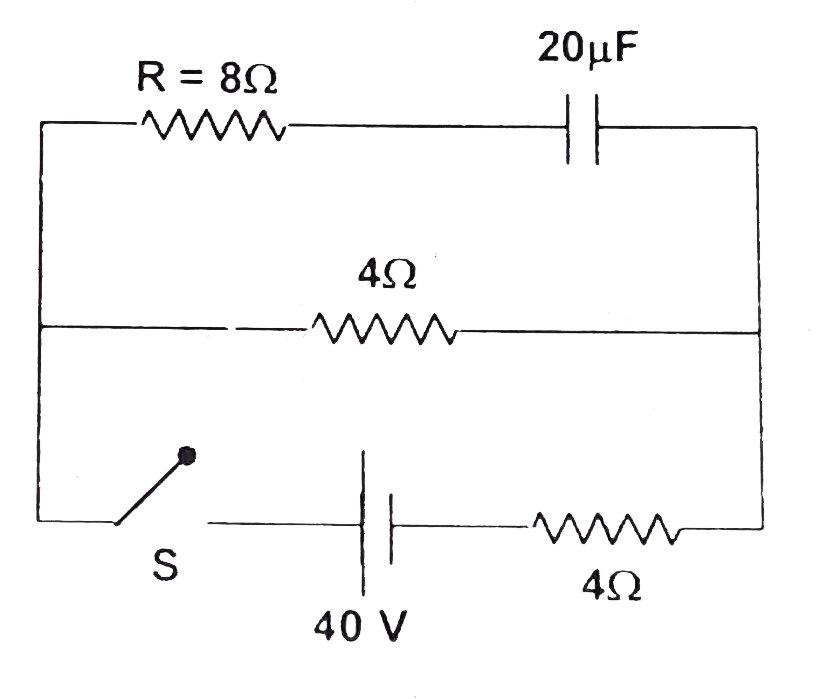
View SolutionIn the circuit shown the currents in 4Ω and 8Ω resistances are
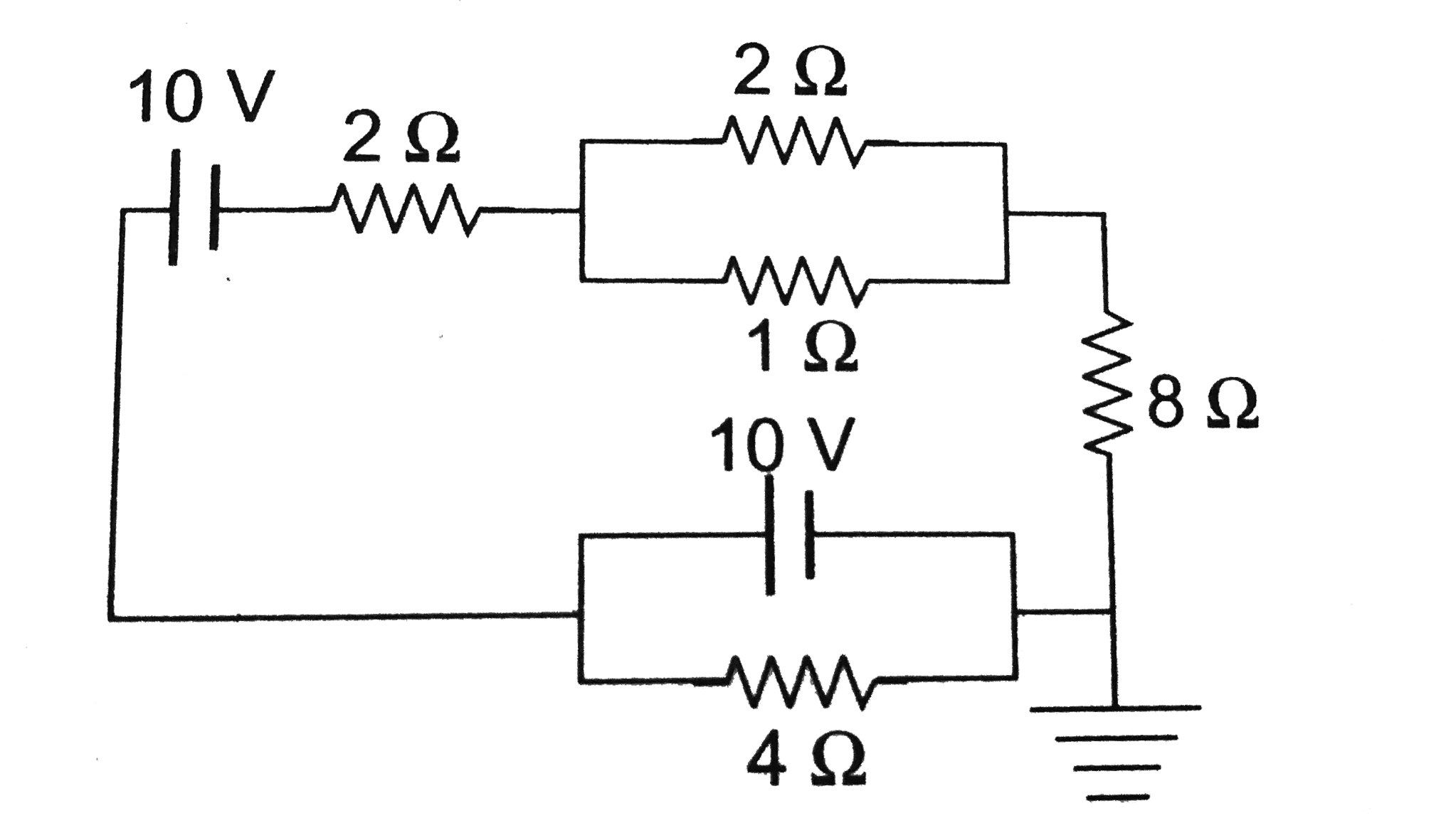
View SolutionIn the circuit shown in the figure The steady state currents i1andi2 in the coils after the switch S is closed are
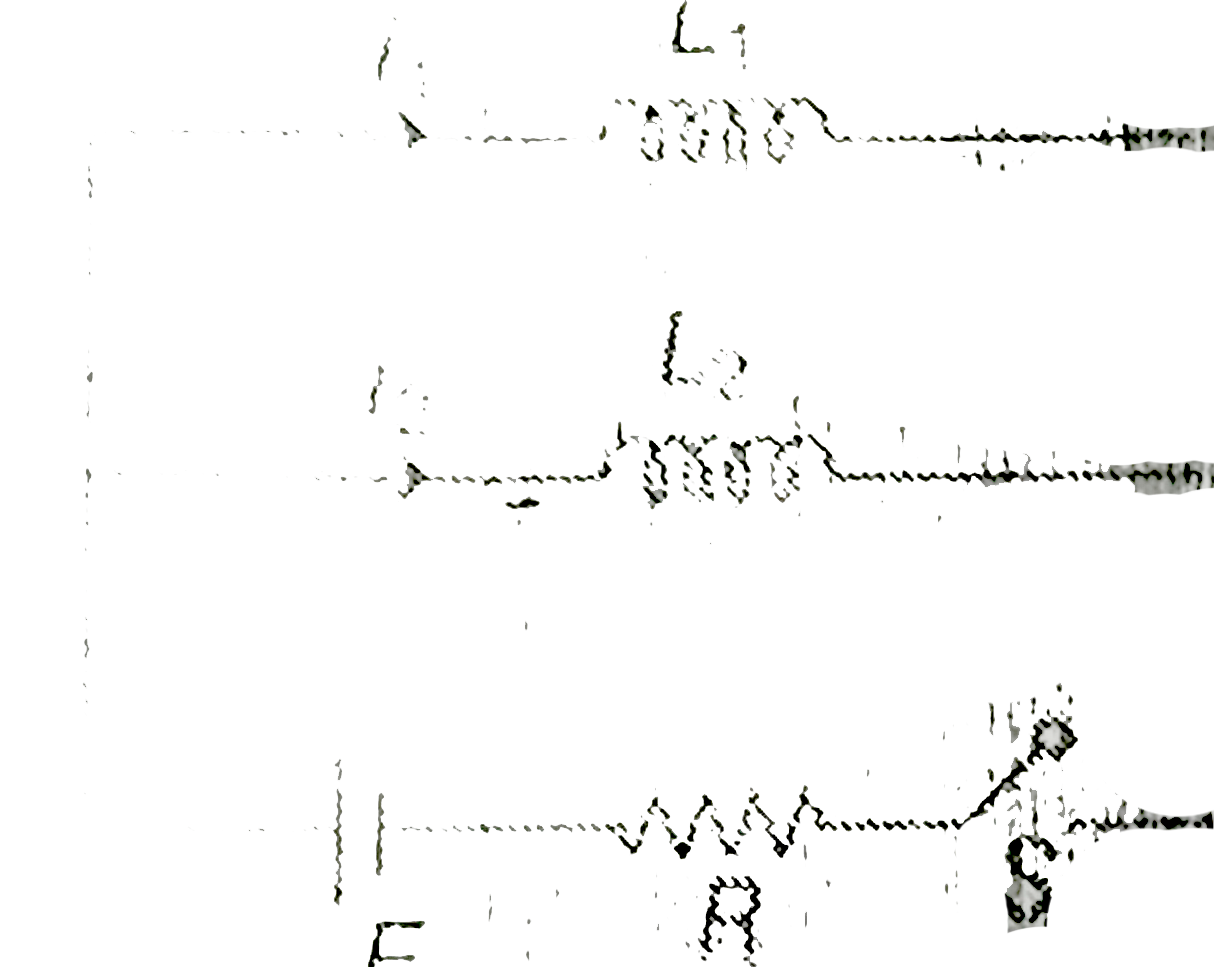
View Solution

